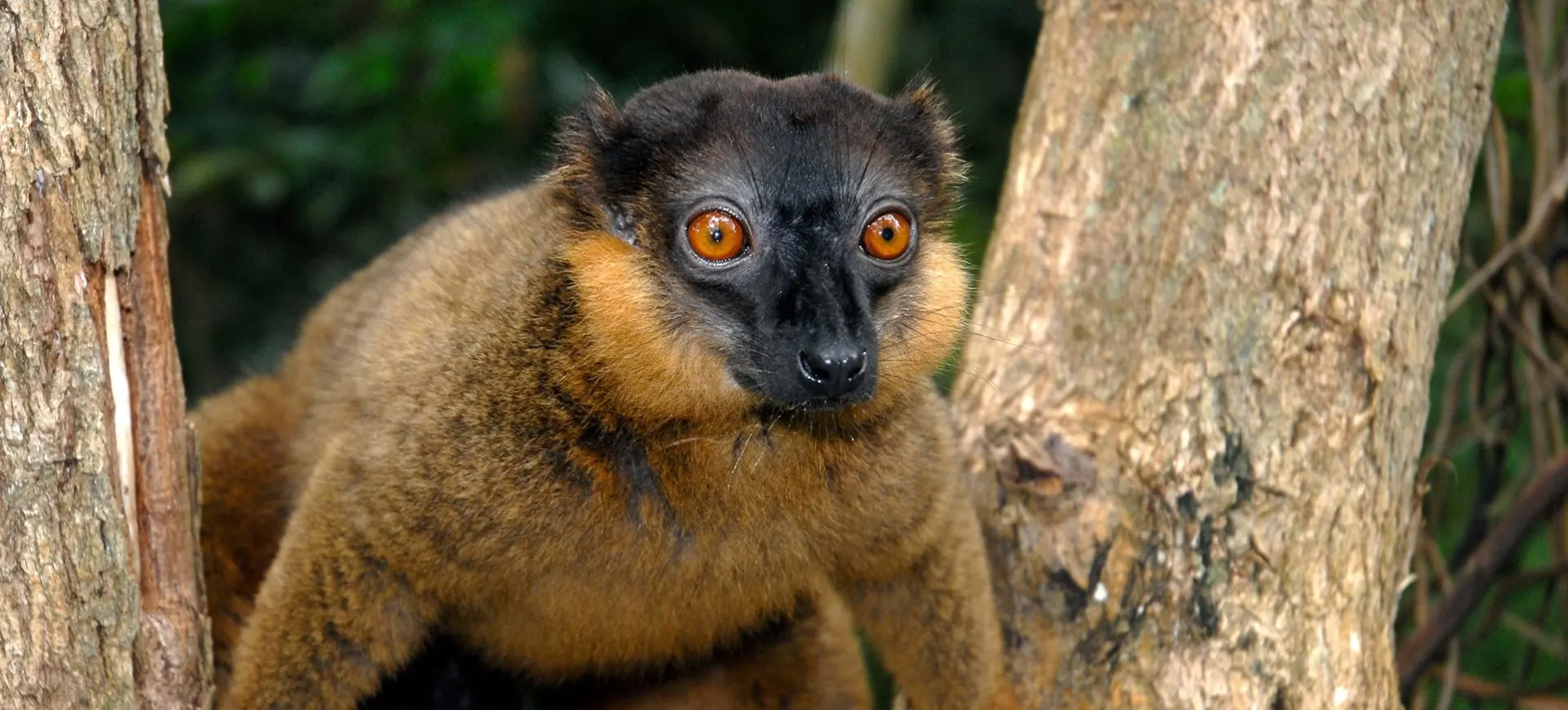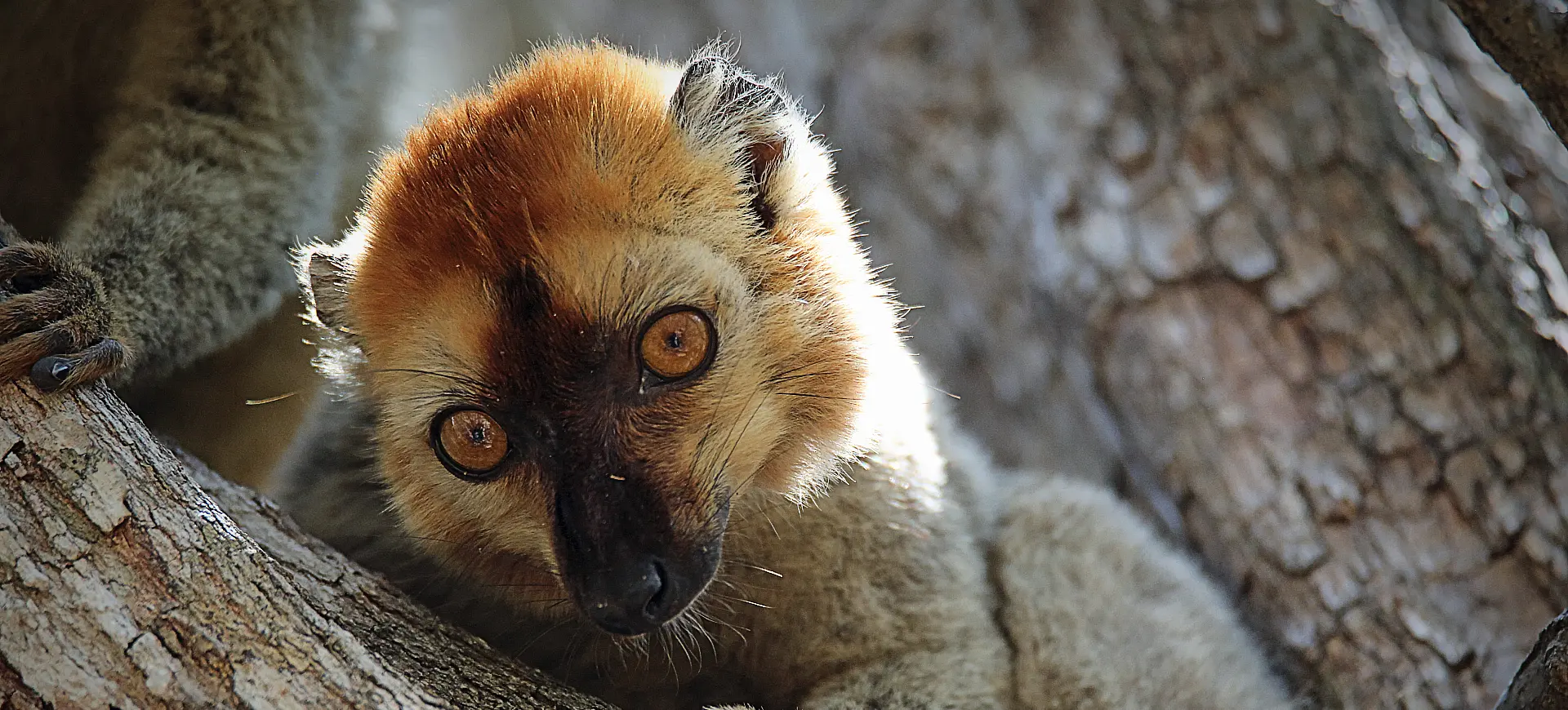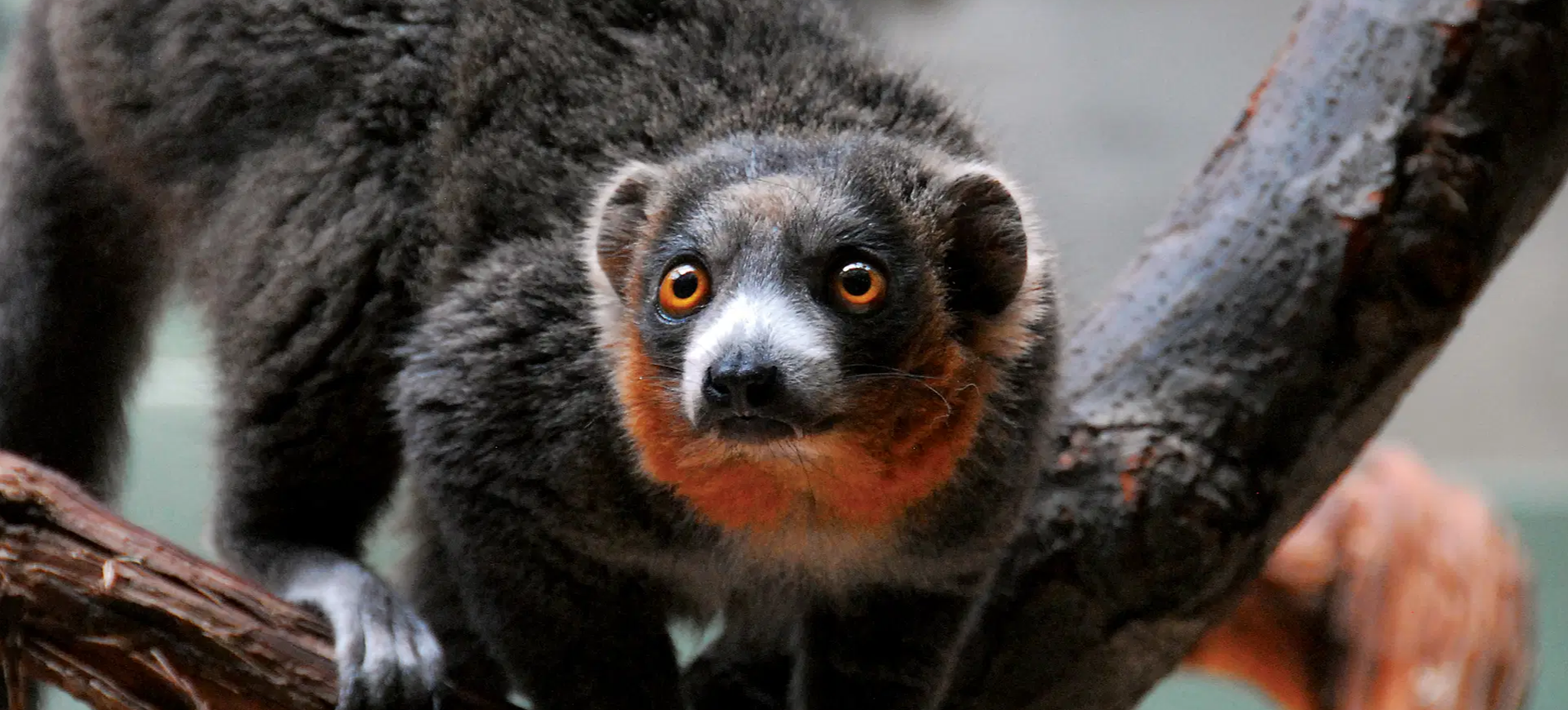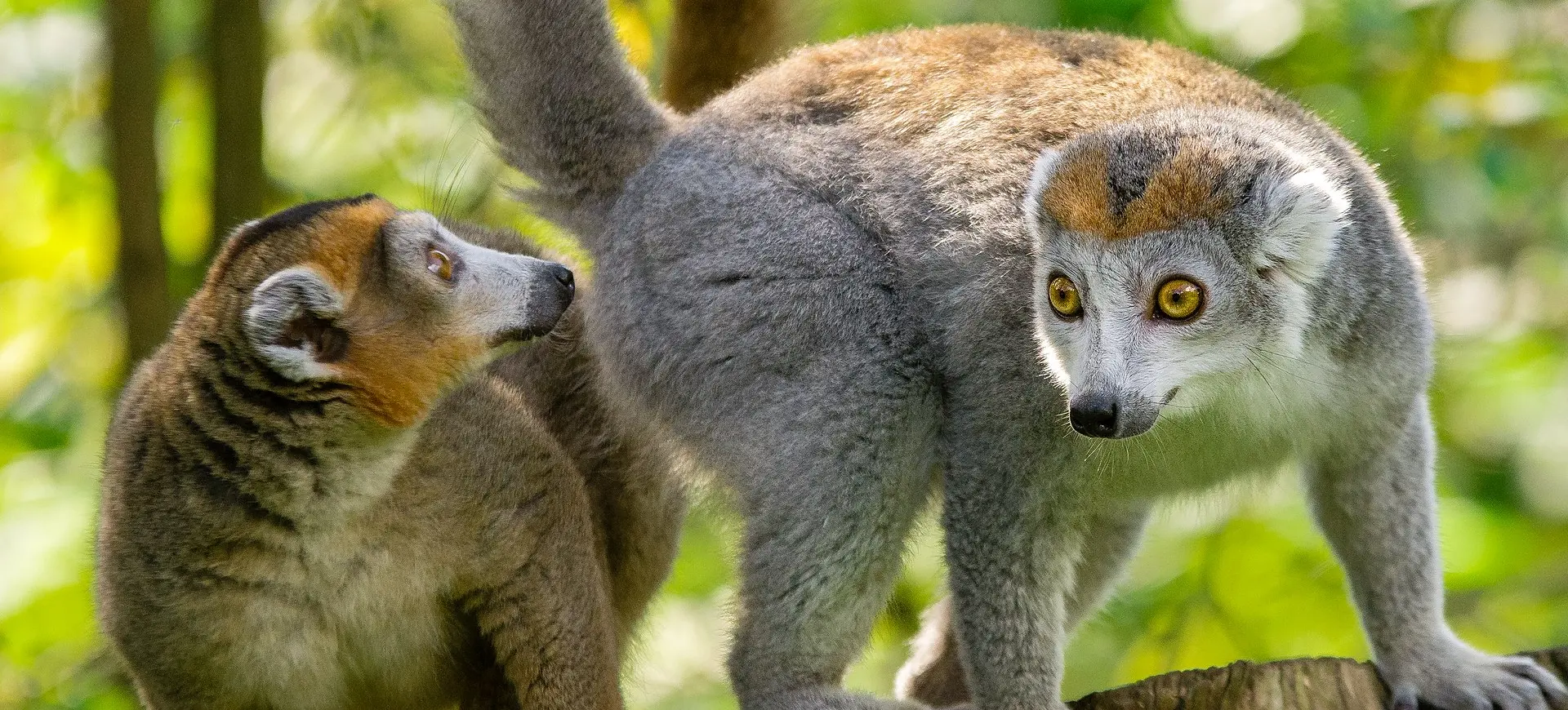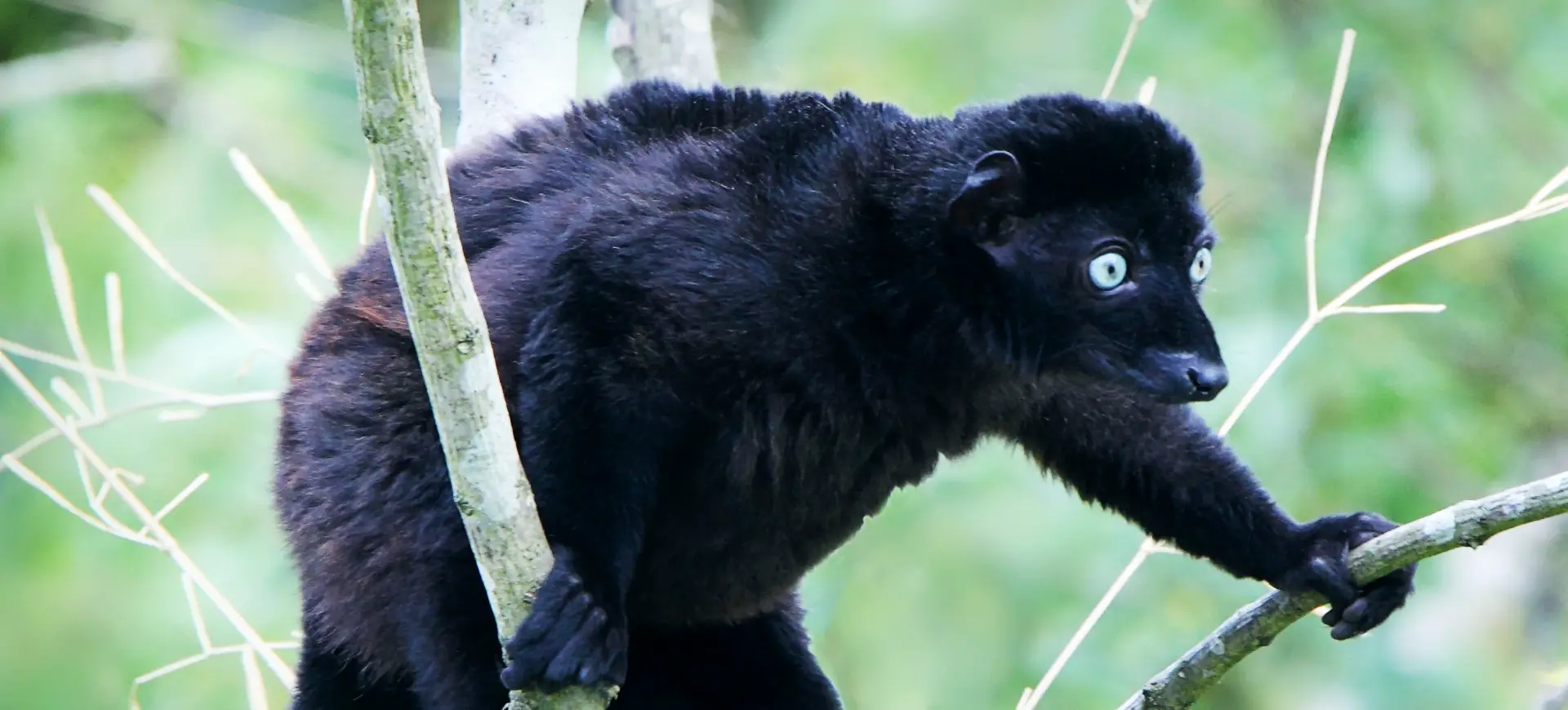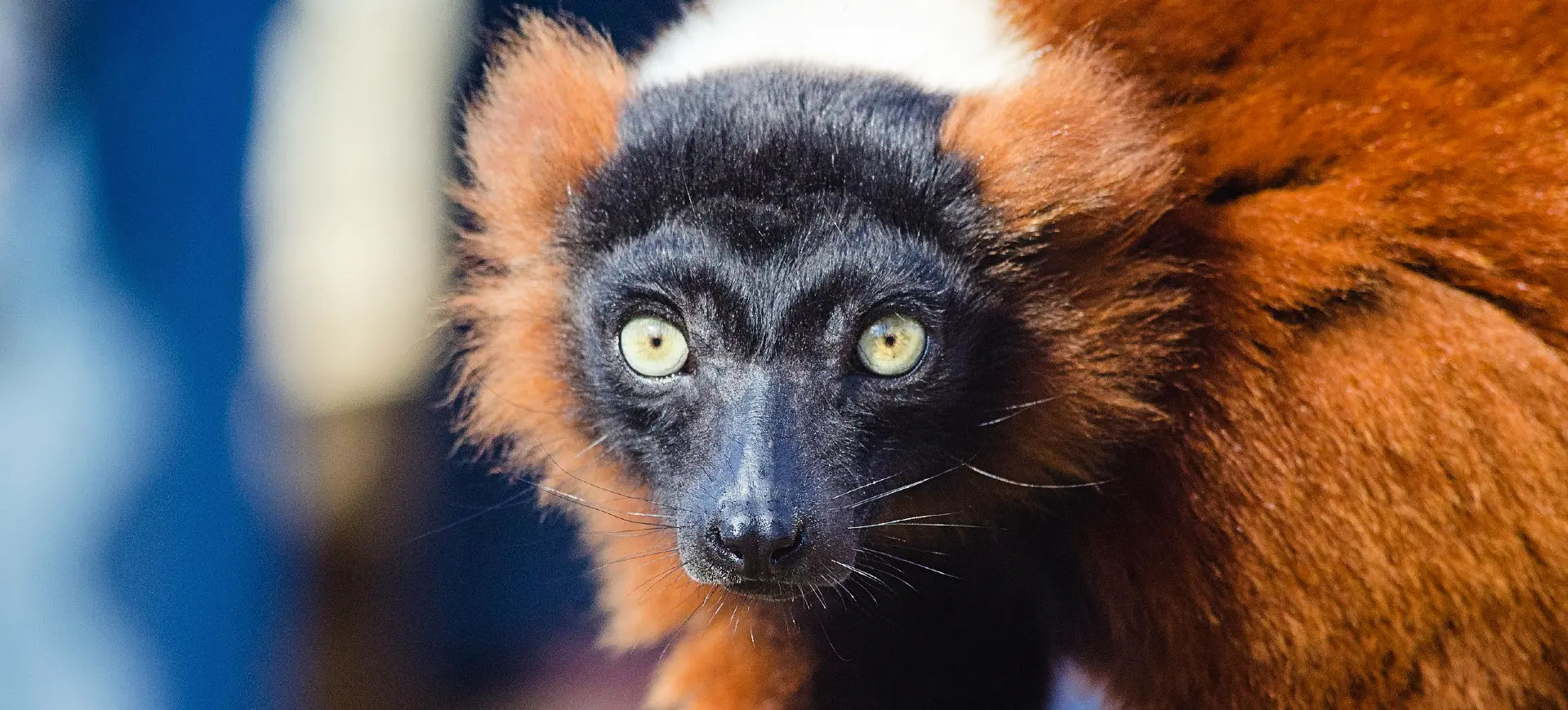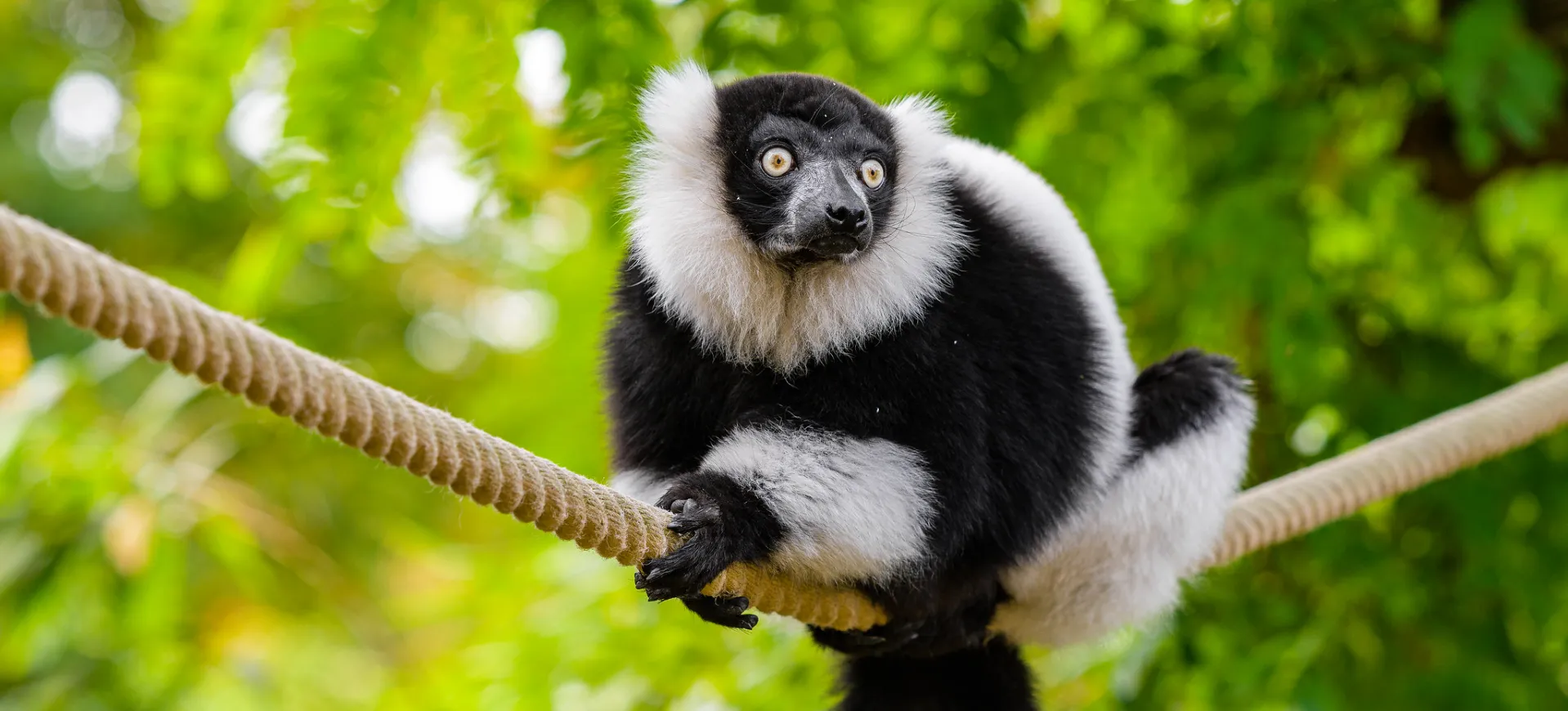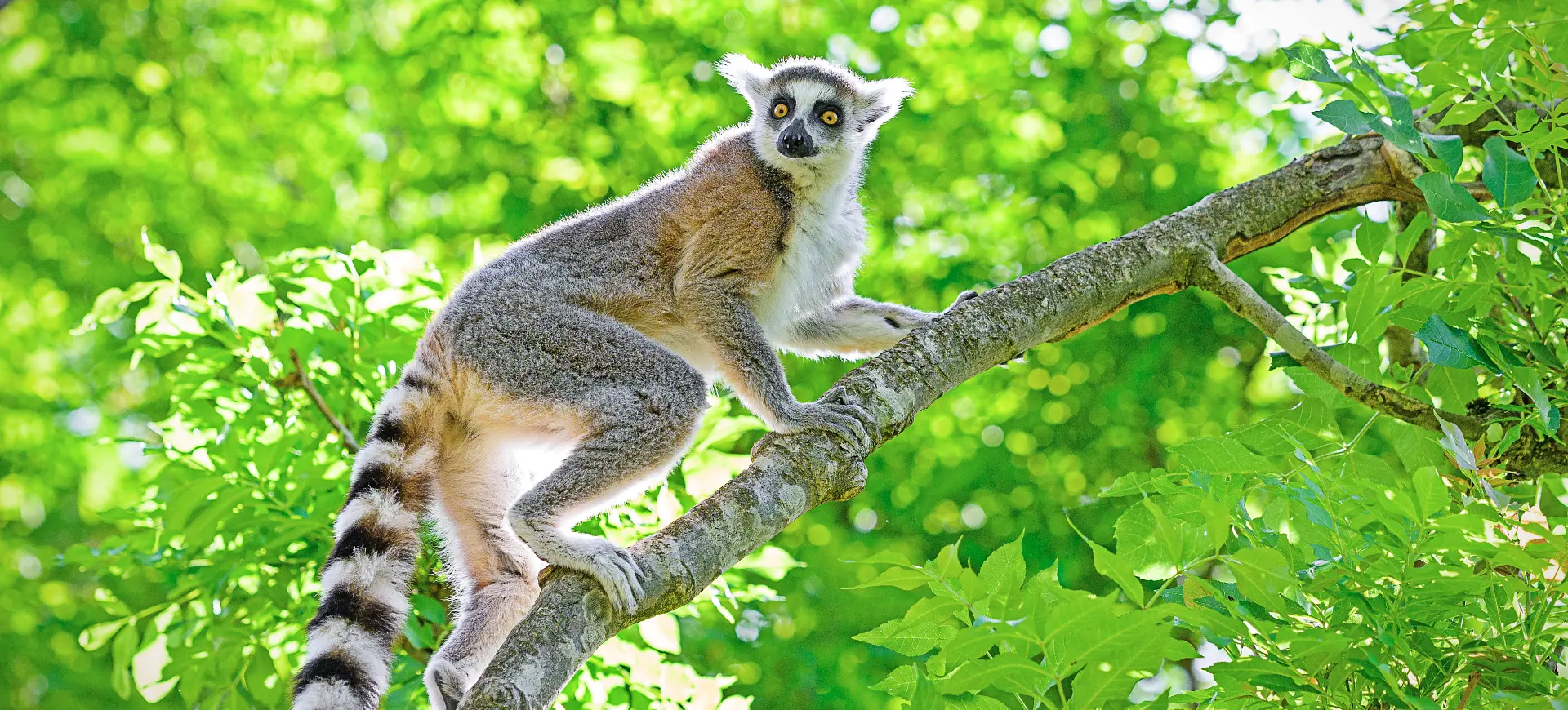Overview
The Common Brown Lemur (Eulemur fulvus) is a species of lemur endemic to Madagascar, showcasing the island’s unique biodiversity. This medium-sized primate possesses a versatile diet and exhibits various behaviors that underscore its adaptability to diverse forest habitats. Characterized by its brown or grey fur and distinctive white eye patches, the Common Brown Lemur plays a crucial role in its ecosystem, particularly in seed dispersal. Socially, these lemurs live in groups ranging from a few individuals to over a dozen, highlighting complex social interactions and communication within their communities.
The Common Brown Lemur has adapted to various habitats across Madagascar, from dry deciduous forests to rainforests. This adaptability has allowed them to survive in various environments, but deforestation and habitat loss pose significant threats to their populations. Conservation efforts are vital for this species, as they help maintain the ecological balance by spreading seeds and supporting forest regeneration. Despite these efforts, the Common Brown Lemur faces hunting and habitat fragmentation challenges, which threaten their survival and necessitate ongoing protection and study.
Their behavior and diet vary seasonally, reflecting the dynamic nature of Madagascar’s ecosystems. The Common Brown Lemur’s diet mainly consists of fruits, leaves, and flowers, but it can also include insects and small vertebrates, indicating a flexible feeding strategy. This dietary versatility helps them to thrive in various environments, although it also makes them vulnerable to changes in habitat quality and food availability. Conservation strategies for the Common Brown Lemur focus on habitat preservation, anti-poaching measures, and environmental education to ensure their survival.
Physical Description:
Sporting a coat that varies in shade from rich brown to grey, the Common Brown Lemur is easily recognized by its contrasting facial fur, highlighting its expressive eyes and giving it a distinctive, almost masked appearance. These primates are noted for their large, round eyes, adapted to their primarily crepuscular lifestyle, allowing them to see clearly in the dim light of dawn and dusk. There is a subtle difference in appearance between the sexes; males may display a more pronounced ruff around their necks, distinguishing them from their female counterparts. The lemur’s long, bushy tail, often exceeding the length of its body, serves not just for balance while navigating the treetops but also as a tool for social interaction and communication within their groups.
Equipped with opposable thumbs and strong, muscular hind legs, the Common Brown Lemur is adept at moving through its arboreal habitat. These physical traits enable the lemur to easily leap between tree branches, an essential skill for foraging and predator evasion. The forward-facing orientation of their eyes offers an expansive field of vision, a critical adaptation for accurately assessing distances in the forest canopy complex, three-dimensional environment. This combination of physical characteristics underscores the lemur’s evolutionary adaptations to its environment, facilitating its survival and success in the diverse ecosystems of Madagascar.

Lifespan: Wild: ~20 years || Captivity: ~25 years

Weight: Male & Female: 4.4-5.9 lbs (2-2.7 kg)

Length: Male & Female: Body 15 to 18 inches (40-45 cm) || Tail ~20 inches (55 cm)
Characteristic:
Native Habitat:
The Common Brown Lemur is native to Madagascar and occupies a range of forest types across the island, from moist, tropical rainforests to dry deciduous forests. This adaptability to different forest environments underscores the species’ resilience and the importance of diverse habitats for survival. They are typically found in the eastern and northern parts of Madagascar, where forest cover provides essential resources such as food and shelter. Their habitat preferences reflect the need for dense canopy cover for foraging and the availability of tree species that offer fruit and foliage throughout the year.
Despite their adaptability, deforestation, agriculture, and human settlement expansion threaten the Common Brown Lemur’s habitats. Conservation of their natural habitats is crucial for maintaining healthy populations, as these environments provide food, nesting, and breeding sites. Efforts to protect and restore forest habitats are vital for the survival of this species, emphasizing the need for sustainable land management practices that balance human needs with wildlife conservation. Protecting national parks and reserves where these lemurs live is a key strategy in conserving their natural habitats and ensuring their continued presence in Madagascar.
Climate Zones:
Biomes:
Biogeographical Realms:
Continents:
Countries:
Diet:
Diet & Feeding Habits:
The Common Brown Lemur is primarily frugivorous but has an omnivorous diet that includes leaves, flowers, bark, sap, insects, and small vertebrates. This dietary flexibility allows them to adapt to the seasonal availability of food resources in their habitats. They play a pivotal role in their ecosystems as seed dispersers, consuming fruit and excreting seeds at different locations, thus aiding in forest regeneration. During the dry season, when food is scarce, these lemurs may eat more leaves and even soil, which can help them detoxify their bodies and supplement minerals.
Feeding groups are typically small to minimize competition, and food preferences can lead to seasonal migrations within their habitat to follow the ripening of fruits. The Common Brown Lemur’s ability to exploit various food sources has been crucial to its survival in diverse environments. However, it also makes them sensitive to habitat degradation. They have been observed using their sense of smell to locate food and prefer ripe fruits, which are easier to digest and provide more nutrients. Conservation efforts often focus on preserving fruit-bearing trees and natural habitats to support the dietary needs of this species.
Mating Behavior:
Mating Description:
The Common Brown Lemur exhibits a mating system generally described as polygynous, where males mate with multiple females during the breeding season. This system is characterized by male competition for female access, often leading to dominance hierarchies. The mating season for the Common Brown Lemur typically occurs between May and June, with the timing influenced by environmental conditions and food availability. Females give birth to one or two offspring after a gestation period of approximately 120 days, usually in September or October, coinciding with the start of the rainy season when food resources are more abundant.
Parental care is predominantly provided by the female, who is responsible for nursing and carrying the young until they are independent. The young lemurs are weaned by the age of five to six months and reach sexual maturity at about 18 to 24 months. Social bonds within the group play a crucial role in the upbringing of young, with alloparenting observed in some cases. The reproductive success of individuals is closely linked to their position within the social hierarchy, with dominant males and females generally having higher reproductive success.
Reproduction Season:
Birth Type:
Pregnancy Duration:
Female Name:
Male Name:
Baby Name:
Social Structure Description:
The social structure of the Common Brown Lemur is characterized by group living, with group sizes ranging from a few individuals to over a dozen. These groups typically include multiple males and females; a dominant female often leads the group. Social hierarchies within groups can influence resource access, mating opportunities, and social interactions. Communication among group members is complex, involving a variety of vocalizations, facial expressions, and body postures that convey information about social status, emotional state, and environmental cues.
Cooperation is evident in social grooming, strengthening social bonds and reducing stress among group members. Alloparenting, where individuals other than the biological parents care for the young, has been observed, highlighting the communal nature of their social system. Territorial behavior is present, with groups defending their home ranges through vocal displays and scent marking. The social dynamics within groups can be fluid, with changes in group composition occurring due to births, deaths, and the dispersal of individuals, demonstrating the adaptability of their social structure.
Groups:
Conservation Status:
Population Trend:
The population of the Common Brown Lemur is believed to be declining, primarily due to habitat destruction, fragmentation, and hunting. While exact numbers are difficult to ascertain, observations suggest significant reductions in areas heavily impacted by human activity. Protected areas and national parks remain crucial sanctuaries for this species, providing refuge from the immediate threats posed by habitat loss. The effectiveness of these protected areas in conserving the species highlights the importance of expanding and enforcing conservation measures across Madagascar.
Despite the challenges, some populations of the Common Brown Lemur have shown resilience, adapting to disturbed habitats and secondary forests. However, the long-term viability of these populations is uncertain without the implementation of comprehensive conservation strategies that address the root causes of their decline. Conservation efforts must prioritize habitat preservation, the establishment of ecological corridors, and local community engagement to mitigate the impact of human activities. Education and sustainable development programs are also key to ensuring the coexistence of human populations with this emblematic species of Madagascar’s biodiversity.
Population Threats:
The primary threats to the Common Brown Lemur include habitat destruction due to slash-and-burn agriculture, logging, and the expansion of human settlements. These activities fragment their living spaces, significantly impacting their ability to find food, mate, and disperse. Illegal hunting for food and the pet trade also pose a significant risk to their populations, exacerbating the decline in some regions. Climate change further threatens their habitats by altering the distribution and abundance of food resources, making it more challenging for these lemurs to adapt to rapidly changing environmental conditions.
Conservation measures are critical to address these threats, focusing on protecting habitats, enforcing hunting regulations, and promoting sustainable land use practices. The involvement of local communities in conservation efforts is essential for the success of these initiatives, as is the support of international conservation organizations. Research and monitoring are necessary to better understand the impacts of these threats on Common Brown Lemur populations and to inform effective conservation strategies. Collaborative efforts at the local, national, and international levels are crucial for ensuring the survival of this species in the wild.
Conservation Efforts:
Conservation efforts for the Common Brown Lemur include habitat protection by establishing and managing protected areas and national parks. Reforestation and habitat restoration projects are also important for repairing damaged ecosystems and providing the lemurs with the resources they need to survive. Environmental education programs aimed at local communities help to raise awareness about the importance of lemurs and the threats they face, fostering a culture of conservation. International partnerships and funding support conservation research, monitoring, and implementing sustainable development projects that benefit lemurs and local human populations.
Anti-poaching measures and enforcing wildlife protection laws are critical to mitigating the direct threats to the Common Brown Lemur. Although limited for this species, conservation breeding programs play a role in maintaining genetic diversity and can support reintroduction efforts where populations have been severely depleted. The collaboration between local communities, government agencies, and non-governmental organizations is essential for the success of these conservation efforts, ensuring that protective measures are culturally sensitive and economically viable. The ongoing commitment to conservation is vital for the future of the Common Brown Lemur, serving as a model for the conservation of Madagascar’s unique biodiversity.
Additional Resources:
Fun Facts
- The Common Brown Lemur’s diet changes seasonally, with fruits preferred during the wet season and leaves during the dry season.
- Unlike many primate species, the Common Brown Lemur exhibits a high sexual dimorphism in eye color.
- They have a keen sense of smell, which they use extensively to communicate and locate food.
- Common Brown Lemurs are capable swimmers, a behavior uncommon among many lemur species.
- They can live up to 25 years in captivity, though their lifespan in the wild is typically shorter.
- These lemurs are known for their loud, raucous calls, which can be heard long distances.
- The Common Brown Lemur plays a vital role in their ecosystem as a seed disperser.
- They have a symbiotic relationship with certain tree species, pollinating flowers while feeding on nectar.
- Infants cling to their mother’s belly for the first few weeks of life before transitioning to riding on her back.
- The Common Brown Lemur is one of the few lemur species that exhibits a relatively even sex ratio at birth.





